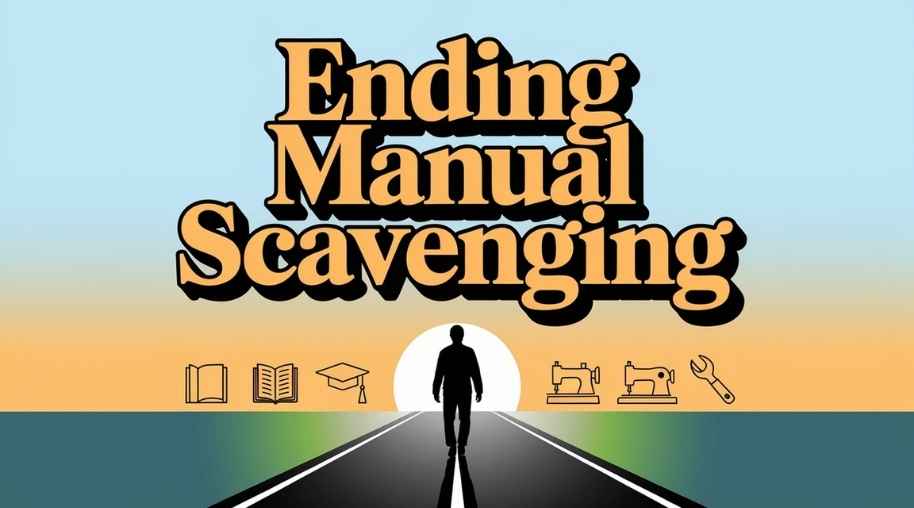SLRS Full Form-Scheme of Liberation and Rehabilitation of Scavengers
by Shashi Gaherwar
0 2033
Scheme of Liberation and Rehabilitation of Scavengers: Objectives, Implementation, and Impact

Introduction
Manual scavenging, the practice of cleaning human excreta from dry latrines and open drains, is a serious social and human rights issue in India. The Scheme of Liberation and Rehabilitation of Scavengers (SLRS), launched by the Government of India, aimed to eradicate this inhumane practice and provide alternative livelihoods for affected individuals.
This article explores the objectives, implementation, benefits, challenges, and impact of the SLRS on former scavengers’ lives.
Objectives of the Scheme
The SLRS was designed with the following objectives:
- Eliminate Manual Scavenging: Replace dry latrines with sanitary facilities.
- Rehabilitation: Provide alternative income sources for scavengers and their families.
- Skill Development: Offer vocational training for new professions.
- Financial Assistance: Provide aid and loans for self-employment.
- Social Inclusion: Promote dignity and integration into mainstream society.
- Legal Protection: Enforce laws to prevent manual scavenging.
Implementation and Key Features
The SLRS was implemented with state governments, urban local bodies (ULBs), and NGOs. Key features include:
- Identification: Surveys to identify scavengers and maintain a national database.
- Financial Support: One-time aid, subsidized loans, and links to micro-finance.
- Skill Training: Programs in trades like tailoring and mechanics, tied to Skill India Mission.
- Sanitary Infrastructure: Replace dry latrines with modern facilities and mechanized cleaning.
- Legal and Social Support: Enforce the Prohibition of Employment as Manual Scavengers Act, 2013, and provide counseling.
Challenges and Limitations
The SLRS faced several challenges:
- Incomplete Identification: Inaccurate surveys missed many scavengers.
- Limited Awareness: Beneficiaries lacked knowledge of scheme benefits.
- Slow Implementation: Bureaucratic delays and poor coordination hindered progress.
- Social Discrimination: Caste-based stigma persisted post-rehabilitation.
- Inadequate Training: Training often misaligned with job market needs.
Impact of the Scheme
The SLRS achieved significant outcomes:
- Reduced Scavenging: Strict enforcement and rehabilitation lowered manual scavenging.
- Alternative Employment: Many beneficiaries started businesses or found new jobs.
- Increased Awareness: Laws and campaigns raised public awareness.
- Financial Independence: Loans and aid enabled small business startups.
Government’s Continued Efforts: The NAMASTE Scheme
In 2022, the National Action for Mechanized Sanitation Ecosystem (NAMASTE) scheme was launched to further rehabilitation:
- Mechanized Sanitation: Introduce modern cleaning technologies.
- Protective Gear: Provide equipment for sanitation workers.
- Social Security: Extend financial and social benefits.
- Eradication: Eliminate manual scavenging through technology.
The Scheme of Liberation and Rehabilitation of Scavengers was a landmark initiative to eradicate manual scavenging and ensure dignity, financial independence, and social integration. While challenges persist, continued efforts like NAMASTE strengthen India’s commitment.
Community participation, strict law enforcement, and socio-economic support are crucial for a manual scavenging-free India.
Further Learning Resources
If you’re passionate about building a successful blogging website, check out this helpful guide at Coding Tag – How to Start a Successful Blog. It offers practical steps and expert tips to kickstart your blogging journey!
For dedicated UPSC exam preparation, we highly recommend visiting www.iasmania.com. It offers well-structured resources, current affairs, and subject-wise notes tailored specifically for aspirants. Start your journey today!

Share:








Comments
Waiting for your comments